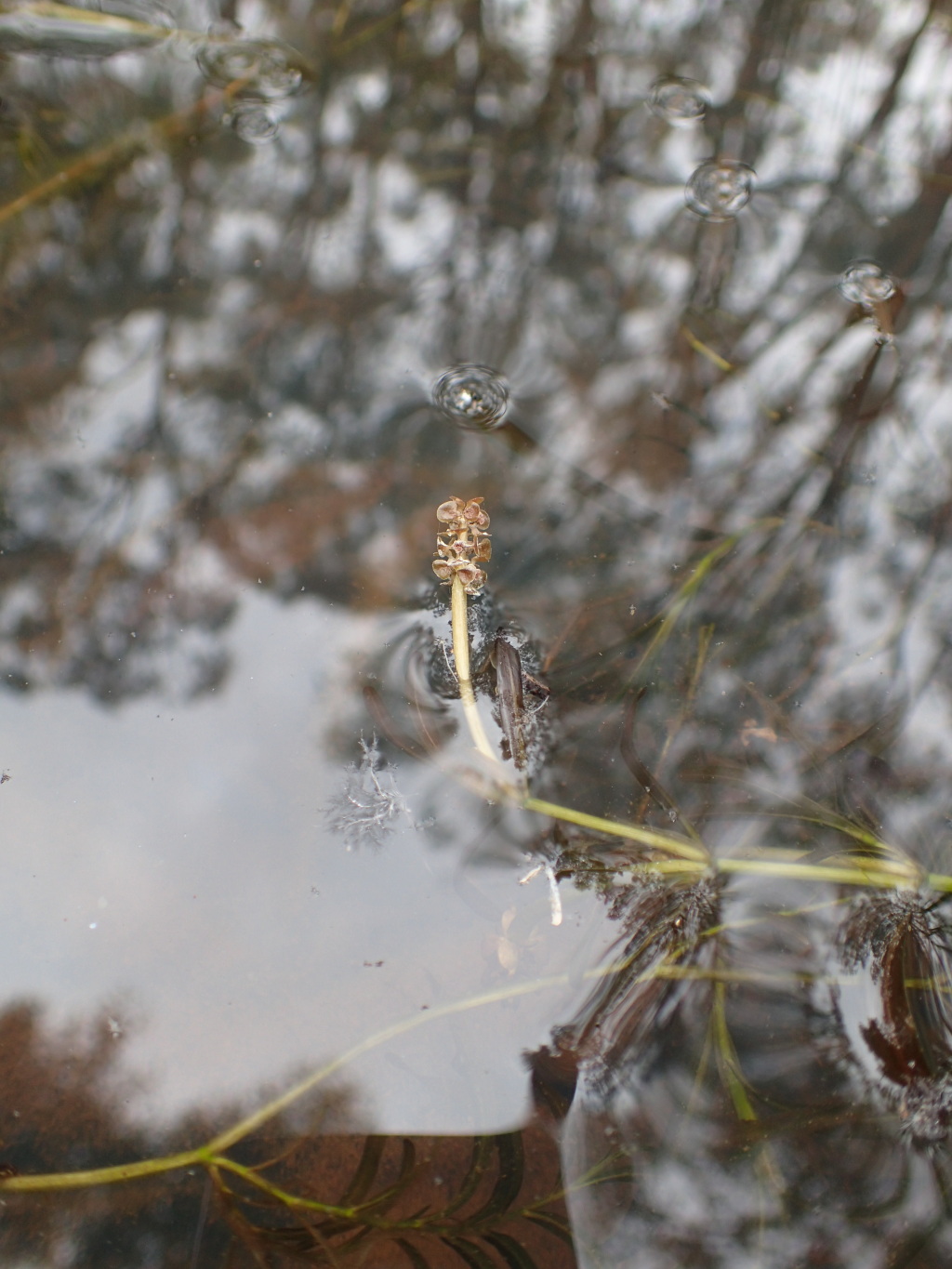Potamogeton ochreatus
Raoul Blunt PondweedSubmerged herb, with branches flattened, up to 4.5 m long. Leaf sheath free, up to 1.5(–2)cm long, becoming lacerated or persisting as numerous long fibres; ligule absent. Leaves sessile; lamina linear, 2.5–9(–13)cm long, 0.2–0.5(-0.6) cm wide, translucent; base attenuate to acute; margin entire, flat; apex rounded to obtuse; (3 or)5 principal longitudinal veins, with numerous fine secondary longitudinal veins. Inflorescence c. 10–15-flowered. Infructescence 1.5–2.5 cm long. Fruiting carpels c.4 mm long (including distal point), basally smooth or with 3 low, smooth or faintly tuberculate dorsal ridges, distally with a conspicuous, slender, ± curved point c. 1 mm long. Flowers and fruits (Aug.–) Oct.–Mar.(–Apr.).
LoM, MuM, Wim, Brid, VVP, VRiv, RobP, MuF, GipP, OtP, WaP, Gold, CVU, GGr, DunT, NIS, EGL, EGU, WPro, HSF, HNF, OtR, Strz, MonT, VAlp. Also WA, NT, Qld, NSW, Tas. New Zealand. Occurs in still to strongly flowing fresh water, in agricultural dams, swamps, creeks and rivers, on muddy to gravelly substrates.
New vegetative growth of this species is difficult to distinguish from Potamogeton crispus (see notes under P. crispus for details).
Conn, B.J. (1994). Potamogetonaceae (including Ruppiaceae). In: Walsh, N.G.; Entwisle, T.J., Flora of Victoria Vol. 2, Ferns and Allied Plants, Conifers and Monocotyledons, pp. 147–155. Inkata Press, Melbourne.
 Spinning
Spinning




